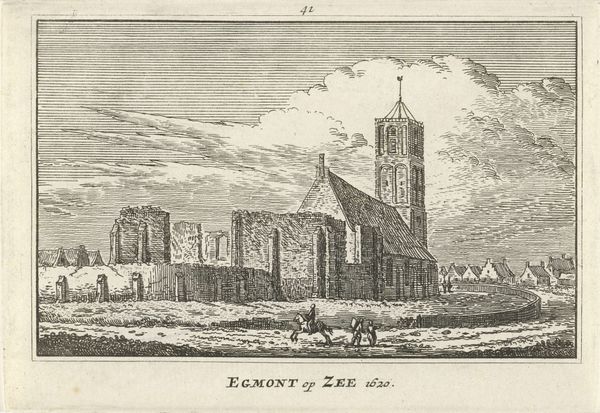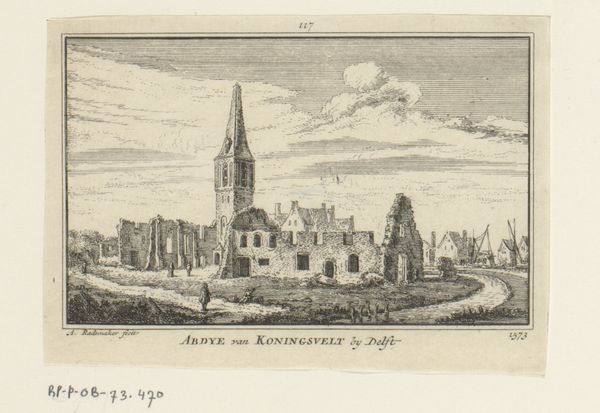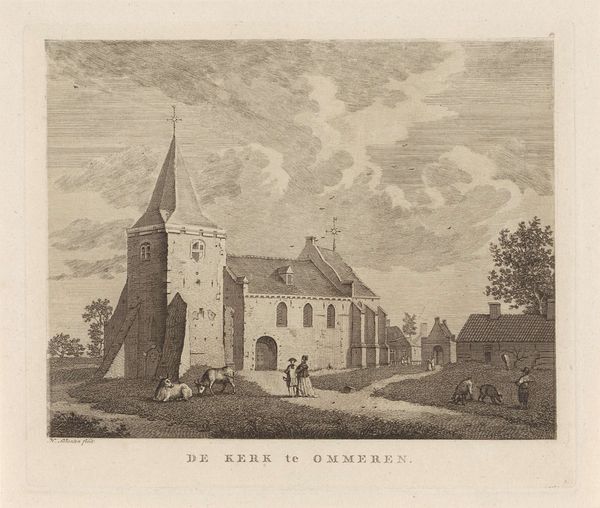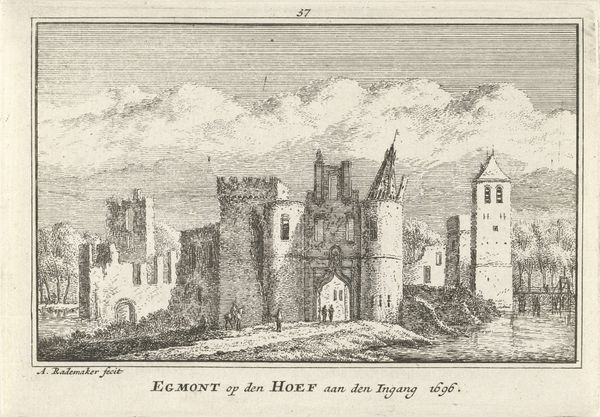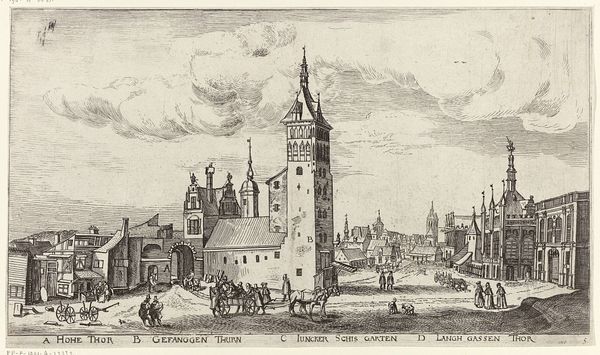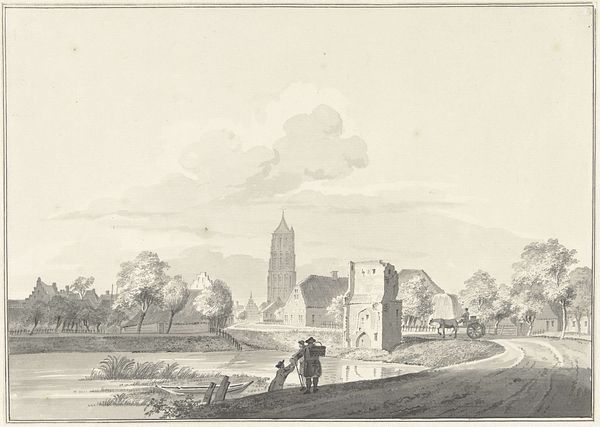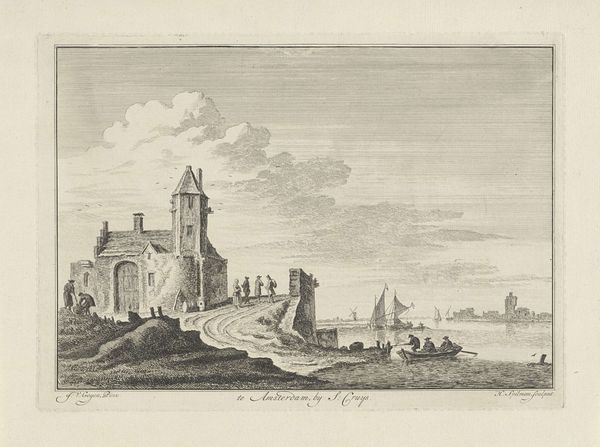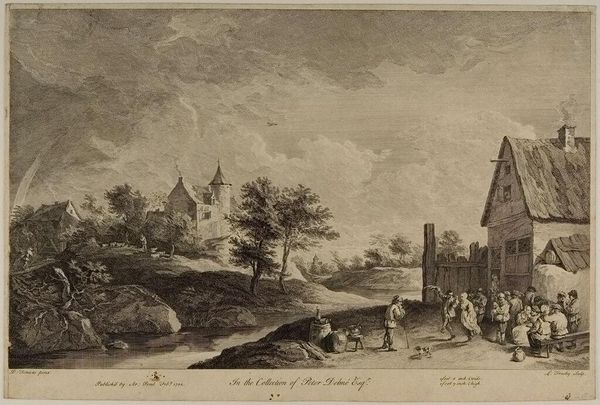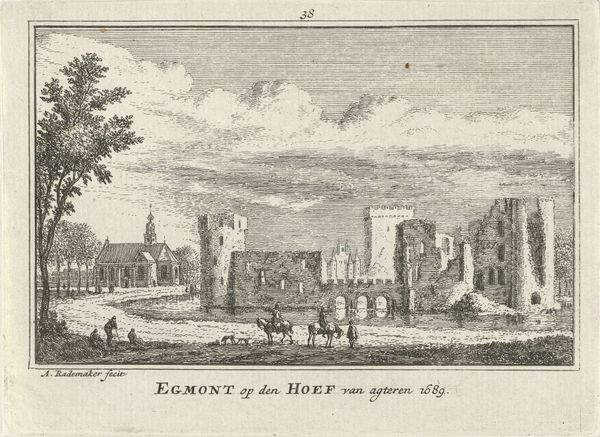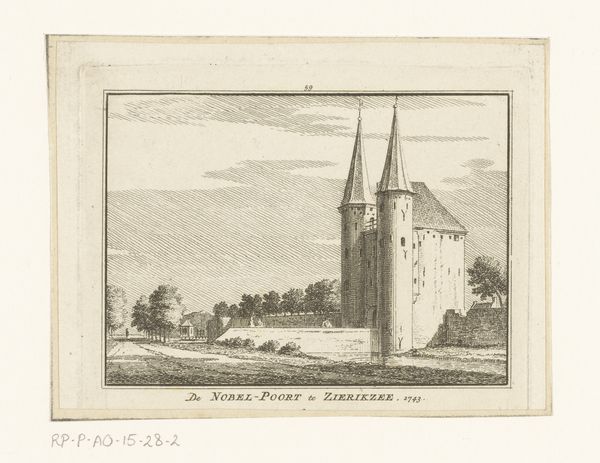
print, engraving
#
dutch-golden-age
# print
#
old engraving style
#
landscape
#
cityscape
#
engraving
Dimensions: height 80 mm, width 115 mm
Copyright: Rijks Museum: Open Domain
Editor: This print, "Gezicht op Egmond aan Zee, 1620," by Abraham Rademaker, housed at the Rijksmuseum, is striking. The detailed engraving captures the small village so meticulously. The church tower really dominates the landscape. I am curious about how it was made, given the era? Curator: The method of production tells us a lot. Engravings like this were not just aesthetic exercises. Consider the copper plate, the skilled labor needed to carve the image in reverse. Prints were made serially. How did they disseminate information, circulate images of places like Egmond aan Zee? It’s a commercial venture. Editor: So it's less about "high art" and more about mass production of images? Curator: Precisely! Look at the even lines of the sky – almost manufactured. This speaks to the burgeoning print market and the need for consistent output. Also, think about the function. The choice of printing as the medium impacts circulation, making the depicted village accessible. What materials did they use? Who consumed them and where? Editor: I see. So by looking at the material and process, we understand that this image served a function beyond simple aesthetics. The labor is more visible here. Curator: Yes. And Rademaker, by producing these prints, also participates in shaping our perception. The engraving emphasizes this over lived experience. This shapes our view, even to this day. Editor: I had not thought about how the means of production change our understanding of an image like this. It highlights how art is linked to manufacturing. Thank you for a new point of view! Curator: Always look beyond the surface to the systems and material conditions that give art meaning. Art reflects so many aspects of everyday life.
Comments
No comments
Be the first to comment and join the conversation on the ultimate creative platform.


